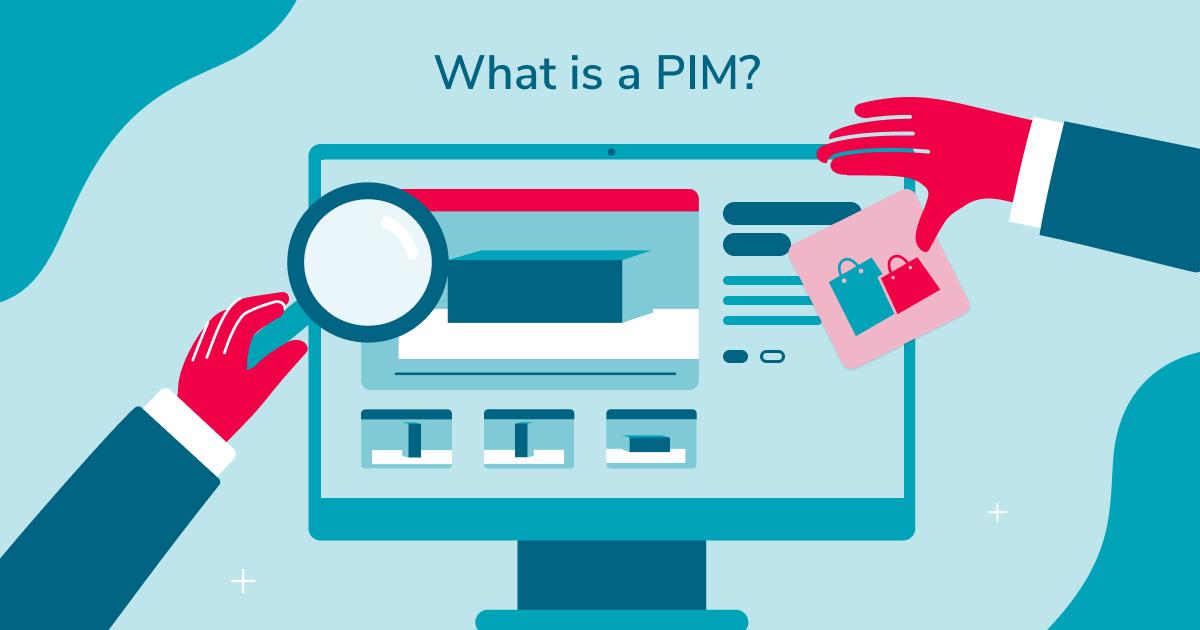Product information management: PIM explained, how it works, & top features

A PIM (product information management) system centralizes, organizes, and distributes product information, like product descriptions, marketing assets, and shipping details or materials. A PIM system is the single source of truth for accurate product information across your sales, marketing, and e-commerce channels.
In effect, PIM systems streamline the management of your entire product inventory.
How does PIM work?
PIM systems centralize product information into a single platform, allowing businesses to gather and enrich attributes from various sources. PIM systems also ensure information accuracy and consistency through missing data field alerts, team member accessibility, and integrations with digital asset management (DAM) platforms. Once attributes are fully prepared, PIM systems distribute them across sales and marketing channels, such as Shopify and Amazon, while automatically tailoring attributes to align with each channel’s unique requirements.
What are the benefits of PIM systems?
Depending on your business, there are multiple benefits of PIM systems:
Centralized product data
A PIM system centralizes product data, making it easier to manage, update, and maintain. Managing product data from one source of truth reduces the risk of errors and inconsistencies across channels.
Enhanced customer experience
PIM systems ensure your product data is consistent and complete across all channels, which leads to a better customer experience.
Accelerated time-to-market
A PIM solution streamlines workflows and automates repetitive tasks, accelerating products to market.
Improved omnichannel marketing
With a PIM system, accurate and formatted product information can be easily distributed to e-commerce sites, social media, print catalogs, and more.
Assisted industry compliance and regulation
PIM systems manage accurate product information that is required for labeling, safety, or technical specifications, helping maintain necessary compliance and regulation needs.

Top PIM system features
PIM systems transform how you manage product information from the ground up. Check out the top PIM solution features:
Product attribute fields
Customizable attribute fields let you organize your data clearly using organization-specific terms. You can customize the key data fields to reflect any information that is important to sell your products, whether it be the product description or shipping information.
Channel mapping
Channel mapping ensures that your product attributes align with retailer terms, eliminating the need for tedious backend adjustments. Product attribute names tend to vary between businesses and retailers, even within the same industry. With a PIM system in place, you can “set and forget” these header correlations.
Digital catalogs
Catalogs are a way to curate product subsets from your line, whether that be your newest drops or old favorites. Any comprehensive PIM solution will offer a digital catalog feature designed to make it easy to share products in a simple, on-brand way.
How does a PIM system help with e-commerce?
PIM systems help distribute accurate product attributes in the right formats to e-commerce platforms, removing the need for tracking product data with spreadsheets and manually updating each storefront’s product information.
Let’s look at a few examples of PIM for e-commerce.
Clothing manufacturer
If you manufacture a line of women’s sportswear, you could use a PIM system to catalog your products.
You could organize your entire line with item descriptions, sizes, colors, materials, care instructions, labeling, marketing and promotional materials, supply chain management, distribution information, and more — for every single item. From there, you could distribute this information to all your various sales, marketing, and distributor channels, which likely includes e-commerce storefronts.
Since you used a PIM system to centralize and distribute your product information, your distributors will receive accurate product attributes in the correct storefront formats.
Chocolate retailer
Let’s say you’re a chocolate retailer with an e-commerce website and a retail presence in brick-and-mortar stores. You could use a PIM system to:
Finally, you could use a PIM system to share accurate product information with all sales, marketing, and other e-commerce channels.
Comparing PIM vs. other systems
Listed below are some comparisons between PIM vs. other systems:
What is the difference between PIM vs. DAM?
Want to know more? Read our full article on PIM vs. DAM.
What is the difference between PIM vs. CMS?
What is the difference between PIM, DAM, and CMS?
PIM, DAM, and CMS solutions all serve different purposes. PIM systems help teams centralize, organize, and distribute product attributes across channels and teams. DAM systems help teams manage digital content and brand assets across teams and channels. CMS platforms make it easy to create, manage, and publish website content.
What is the difference between DAM, PIM, and MRM?
While DAM and PIM system are for centralizing and organizing digital assets and product attributes respectively, MRM platforms help marketing teams manage resources such as budgets and content more effectively.
Want to learn more? Check out Canto’s marketing resource management guide.
What is the difference between PIM vs. ERP?
What is the difference between PIM vs. CRM?
What is the difference between PIM vs. PDM?
Dive deeper into this topic with Canto’s PDM vs. PIM guide.
How to choose the best PIM system
The best PIM system is the one that addresses your business needs. The top PIM system features to look for include:

Why product-driven brands need DAM and PIM systems
While a PIM system is essential for storing, organizing, and distributing product information, a system to manage your digital assets is equally critical. Digital asset management (DAM) systems complement PIM by providing a centralized library for organizing and sharing visual assets such as product images, marketing videos, and brand graphics — keeping your content organized and accessible.
Together, PIM and DAM systems offer benefits greater than either could provide on their own. When choosing between integrating a DAM and PIM system vs a fully unified PIM + DAM platform, you must consider any integration requirements, data compatibility issues, and the overall user experience.
Likely, a unified PIM and DAM platform will be ideal if you are managing a growing product portfolio.
Canto PIM: The leader in DAM + PIM solutions
Canto PIM centralizes your product information and digital assets, providing a reliable single source of truth for your organization. With advanced tools for collaboration, automated workflows, and real-time updates, Canto PIM equips your teams with the most accurate data and assets.
The result? Faster time to market, enhanced brand consistency, and maximized content ROI, all with a platform that scales with your business.
What makes Canto PIM unique:
From Chaos to Clarity: The Benefits of DAM & PIM
See how unified solutions help brands organize content and streamline management.
PIM system frequently asked questions
What is a PIM system (PIMS)?
A PIM system (product information management system or PIMS) is a solution organizations use to improve product processes. A PIMS centralizes, organizes, and distributes accurate product attributes across teams and channels.
What is a PIM?
A PIM, also known as a product information management system, is a software solution used to centralize product attributes, improving product processes and product information accuracy.
What is PIM software?
PIM software is a platform used by organizations to centralize, organize, and distribute product information across marketing, sales, and channels. PIM software vastly improves product information accuracy, reliability, and accessibility.
